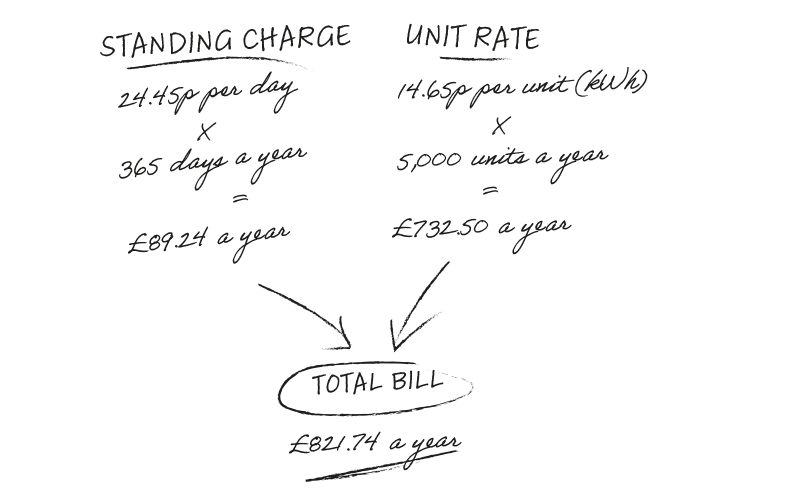Lowering bills, cutting carbon

Ever wondered how we calculate your energy quote? Well, here’s the answer…
We try to make it as simple as possible to generate an accurate energy quote, so we don’t ask anything we don’t need to. Here’s how some of the questions we ask affect your quote…
Great Britain is divided into 14 electricity supply regions, or ‘distribution networks’. How much you pay for a unit of energy varies depending on which region you live in. We use your postcode to make sure the prices we give you are correct for your region.
The tariffs that are available to you vary depending on how you pay for your energy. There are fewer options available for households who pay in advance (using ‘pay as you go’ or ‘prepayment meters’) compared with those who pay by direct debit or quarterly cash or cheque.
In order to help you compare the tariffs on our site with your existing provider, we ask you to tell us your current supplier and the name of the tariff you’re on. This is one of the areas that can cause confusion – read on to find out how this information is used.
There are two parts to any energy bill – a ‘standing charge’ and a ‘unit rate’. The standing charge is the amount your supplier charges you for maintaining the supply of energy to your property. It is charged on a daily basis and so will stay the same irrespective of how much energy you use.
The unit rate is how much you pay for every unit of energy you use. The more you use, the higher your bills will be.
In theory, the standing charge should be reasonably consistent across suppliers, but in reality many suppliers use it to differentiate themselves from their competition. A supplier might, for example, charge a very low standing charge in order to appeal to households that use relatively little energy. For a household that uses a lot of energy (as in the example below), even a high standing charge may account for a relatively small part of their bill compared with their unit rate.

It’s important to give us accurate information on your current energy use, because as well as helping us generate your quote, if you pay by direct debit it will also form the basis of your new supplier’s direct debit charges if you switch. All suppliers have to provide you with an estimate of how much energy you use per year whenever they issue you with a bill, so a recent bill from your current supplier is a good place to look for this info.
Even if you have an online account, your supplier will still be providing this information, often as a downloadable PDF.
Once we’ve got all the information we need on your current energy use, we can crunch the numbers to work out how much each of our tariffs will cost you over the next 12 months. And, to give you a sense of how these compare, we’ll also show how the price differs from what you’ll pay if you do nothing, and stay with your current supplier.
Those words – “if you do nothing” – are really important. If you’re currently on a fixed rate tariff that ends within the next 12 months, our price comparison can’t assume that your current rate will be available for the whole 12 months. In fact, the one thing we can be certain of is that that rate won’t be available once your current contract has ended.
Instead, we have to make an assumption about will happen at the end of your current contract (if you don’t switch to one of our tariffs). In line with Ofgem good practice, we assume that for the remainder of the 12 months, you’ll be placed onto your current supplier’s ‘default’ or ‘standard variable’ tariff.
We’ve worked hard to show these calculations in a way that is easy to understand. To see how any of our quotes are generated, just click on ‘more info’ next to any of the tariff results.

Then, scroll down to ‘Personal projection plan’ and the table will show you all the details you need. The table is broken down by fuel and in each case, shows you how many days we’ve priced at your current fixed rate (the ‘Current’ column) and how many at your supplier’s ‘Default’ rate. You can see the charges for the tariff you’re interested in switching to in the right hand ‘New’ column.

Of course, if you have any questions about how your quote is calculated, use our live chat or email us at help@bigcleanswitch.org and we’ll talk you through it step by step.